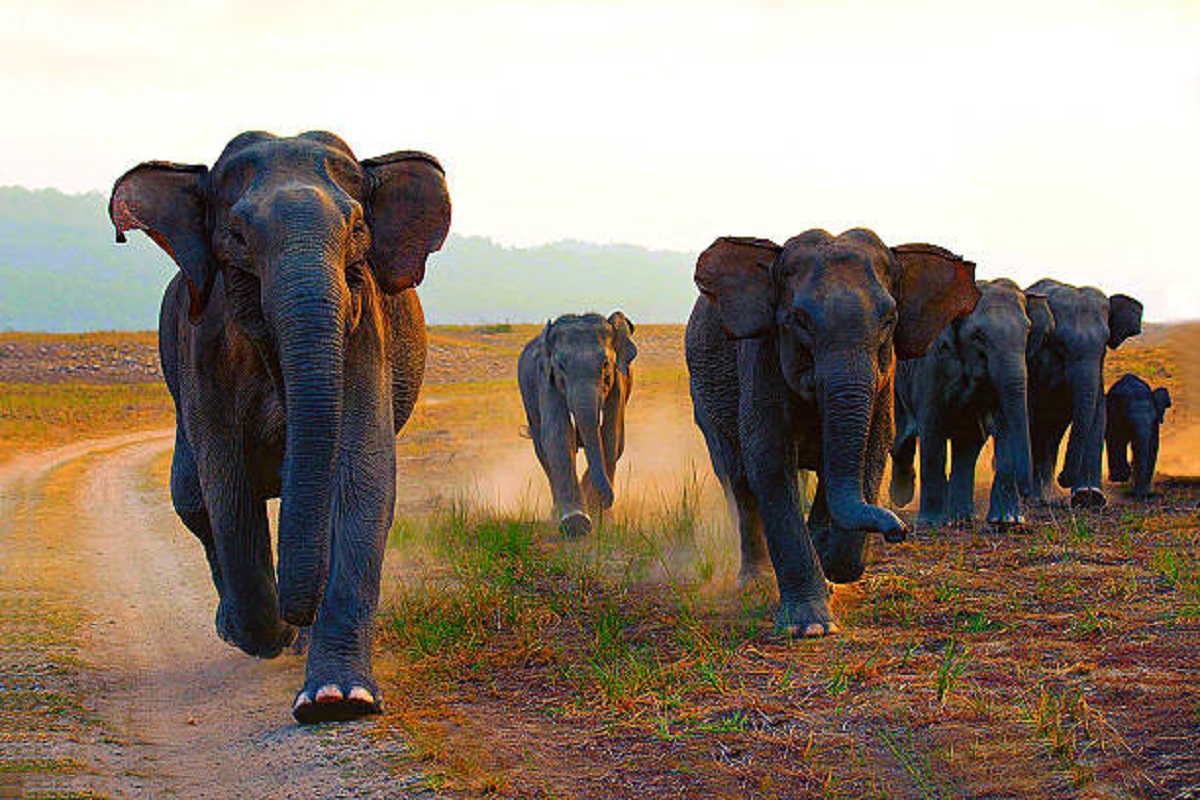The death of eight elephants in Bandhavgarh National Park, Madhya Pradesh, likely due to consuming fungus-infected kodo millet, underscores a profound and growing challenge in India’s conservation landscape. As wildlife and agricultural zones increasingly overlap, the unfortunate outcomes highlight the urgent need for robust strategies that ensure the safety of both animals and rural communities. Elephants are highly social animals with complex foraging habits. As habitats shrink, they often wander into nearby farmland in search of food, inadvertently risking encounters with human agriculture.
In this case, a toxic fungus found in kodo millet ~ a crop typically harmless to humans ~ likely developed after seasonal rains. The high consumption of this millet appears to have led to tragic consequences for the elephants, exposing the overlooked threat posed by agricultural practices near protected areas. In Bandhavgarh’s case, the situation demands immediate action on two fronts. First, there is an evident need for more thorough monitoring of potential hazards that could affect wildlife in buffer zones around parks. Current management systems may not fully account for the risks posed by seemingly benign crops that develop toxins under specific conditions.
Advertisement
By conducting seasonal inspections of farms bordering reserves, authorities could mitigate such risks, identifying and addressing any crops susceptible to fungal growth or other natural toxins. Engaging farmers in this process is essential; for instance, compensated removal or controlled disposal of risky crops like kodo millet could prevent wildlife exposure to these toxins. Secondly, this incident highlights a larger need for a national framework that guides interactions between agriculture and wildlife. India’s rapid population growth and expanding agricultural footprint mean protected areas are increasingly encircled by farmland. To protect wildlife, the government should consider implementing clear policies on permissible crops near conservation areas, particularly during peak wildlife migration and foraging seasons.
By encouraging farmers to grow wildlife-safe crops or introducing regulated planting practices in buffer zones, authorities could reduce the risk of fatal encounters between elephants and toxic crops. Such measures are vital not only for elephant conservation but for public safety as well. When food sources like kodo millet are abundant, elephants are more likely to enter human areas, raising the risk of conflict. A strategic approach that educates farmers on wildlife-friendly agricultural practices and offers support for crop modifications could ease the strain on both sides. Collaborations with conservationists and agronomists could yield sustainable solutions to better protect India’s endangered species without sacrificing farmers’ livelihoods. Ultimately, Bandhavgarh’s tragedy reveals a broader issue that demands immediate attention.
Protecting India’s wildlife cannot stop at the borders of its national parks. It requires comprehensive, adaptive policies that reflect the realities of conservation challenges. By integrating wildlife safety into policy and involving local communities in conservation efforts, India can strive to secure a harmonious coexistence between humans and wildlife. The tragic loss of these elephants should serve as a turning point, pushing policymakers to prioritise wildlife safety in agricultural regions and prevent such disasters









